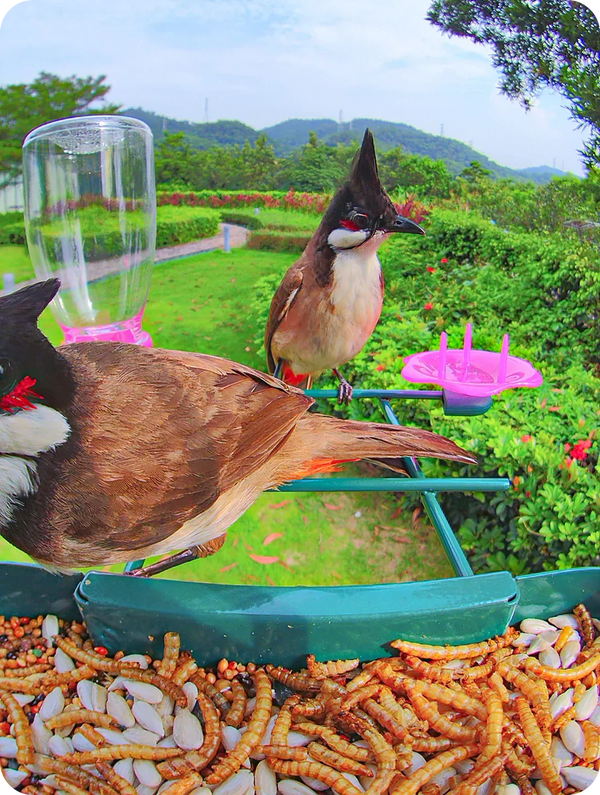Unlock the Secrets to Attracting Birds with the Perfect Suet Feeder!
Suet feeders are an essential tool for bird enthusiasts looking to attract a variety of feathered friends to their backyard. These specially designed feeders provide a high-energy food source that many birds love, especially during the colder months when natural food sources are scarce. Not only do suet feeders support local wildlife, but they also enhance birdwatching experiences, allowing you to observe species you might not see otherwise. This article will guide you through the process of selecting the right suet feeder, using it effectively, and maintaining it to ensure a thriving bird community in your garden.

Choosing the Right Suet Feeder
When it comes to suet feeders, there are several types available, each suited for different bird species. Cage feeders, which are typically made of wire, allow birds to cling to the sides and peck at the suet, making them great for woodpeckers and nuthatches. Tray feeders provide a flat surface for birds to dine, attracting a variety of species, including jays and sparrows. Plug feeders, on the other hand, are designed for suet cakes that fit snugly into the feeder, perfect for reliable feeding without mess. When selecting a suet feeder, consider factors such as size, material, and ease of use. A larger feeder can accommodate more birds and allows for less frequent refills, while a sturdy material like metal will withstand the elements better than plastic. Additionally, look for feeders with easy access for refilling and cleaning. Personal experience has shown me that a well-placed and thoughtfully chosen suet feeder can attract a diverse range of birds, transforming your garden into a lively habitat.
How to Use a Suet Feeder Effectively
To maximize the effectiveness of your suet feeder, placement is key. Position your feeder near trees or shrubs, which provide natural cover for birds and make them feel safe while feeding. Open spaces can also work well, but ensure there are nearby perches where birds can rest between visits. The best times to refill your suet feeder are early in the morning and late in the afternoon, when birds are most active. Experiment with different types of suet to see what attracts the birds in your area. Plain suet is a great starting point, but you can also try varieties mixed with seeds or fruits for added allure. My friend, an avid birdwatcher, swears by using fruit-flavored suet in the spring to attract migratory species. Watching the birds flock to the feeder is always rewarding!
Maintaining Your Suet Feeder
Regular maintenance and cleaning of your suet feeder are crucial for keeping your feathered friends safe and healthy. Over time, old suet can become rancid or moldy, posing health risks to birds. To clean your feeder, first, remove any remaining suet and scrub the feeder with warm, soapy water. Rinse thoroughly and allow it to dry completely before refilling it with fresh suet. It’s also important to check the feeder periodically for wear and tear. If you notice any damage, such as rust on metal feeders or cracks in plastic ones, it’s best to replace them to ensure the safety of the birds. I’ve found that taking the time to maintain feeders not only helps attract more birds but also prolongs the life of the feeder itself.
Common Challenges and Solutions
Using suet feeders can come with its own set of challenges. One common issue is attracting unwanted animals, such as squirrels or raccoons, which can quickly devour the suet meant for birds. To prevent this, consider using feeders with baffles or placing the feeder in a location that is less accessible to these critters. Another challenge is dealing with mold, which can occur in humid conditions. To combat this, ensure your suet is stored in a cool, dry place and avoid leaving it in the feeder for too long. Regular cleaning and monitoring will help keep your feeding station free from these issues, allowing you to enjoy a hassle-free birdwatching experience.
Key Takeaways for Birdwatching Success
In conclusion, choosing the right suet feeder, using it effectively, and maintaining it are all essential steps to attract a diverse array of birds to your yard. By understanding the different types of feeders available and following best practices for placement and maintenance, you can create an inviting space for our feathered friends. Take action today, and immerse yourself in the delightful experience of birdwatching with your very own suet feeder!







تعليقات